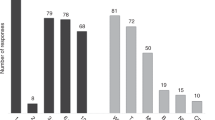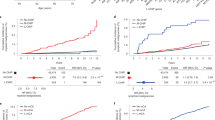Abstract
Hematopoietic stem cell transplantation is becoming an increasingly important approach to treatment of different malignant and non-malignant disorders. There is thus growing demand for diagnostic assays permitting the surveillance of donor/recipient chimerism posttransplant. Current techniques are heterogeneous, rendering uniform evaluation and comparison of diagnostic results between centers difficult. Leading laboratories from 10 European countries have therefore performed a collaborative study supported by a European grant, the EuroChimerism Concerted Action, with the aim to develop a standardized diagnostic methodology for the detection and monitoring of chimerism in patients undergoing allogeneic stem cell transplantation. Following extensive analysis of a large set of microsatellite/short tandem repeat (STR) loci, the EuroChimerism (EUC) panel comprising 13 STR markers was established with the aim to optimally meet the specific requirements of quantitative chimerism analysis. Based on highly stringent selection criteria, the EUC panel provides multiple informative markers in any transplant setting. The standardized STR-PCR tests permit detection of donor- or recipient-derived cells at a sensitivity ranging between 0.8 and 1.6%. Moreover, the EUC assay facilitates accurate and reproducible quantification of donor and recipient hematopoietic cells. Wide use of the European-harmonized protocol for chimerism analysis presented will provide a basis for optimal diagnostic support and timely treatment decisions.
This is a preview of subscription content, access via your institution
Access options
Subscribe to this journal
Receive 12 print issues and online access
$259.00 per year
only $21.58 per issue
Buy this article
- Purchase on Springer Link
- Instant access to full article PDF
Prices may be subject to local taxes which are calculated during checkout

Similar content being viewed by others
References
Matthes-Martin S, Lion T, Haas OA, Frommlet F, Daxberger H, Konig M et al. Lineage-specific chimaerism after stem cell transplantation in children following reduced intensity conditioning: potential predictive value of NK cell chimaerism for late graft rejection. Leukemia 2003; 17: 1934–1942.
Liesveld JL, Rothberg PG . Mixed chimerism in SCT: conflict or peaceful coexistence? Bone marrow transplant 2008; 42: 297–310.
Lawler M, McCann SR, Marsh JC, Ljungman P, Hows J, Vandenberghe E et al. Serial chimerism analyses indicate that mixed haemopoietic chimerism influences the probability of graft rejection and disease recurrence following allogeneic stem cell transplantation (SCT) for severe aplastic anaemia (SAA): indication for routine assessment of chimerism post SCT for SAA. Br J Haematol 2009; 144: 933–945.
Lion T, Daxberger H, Dubovsky J, Filipcik P, Fritsch G, Printz D et al. Analysis of chimerism within specific leukocyte subsets for detection of residual or recurrent leukemia in pediatric patients after allogeneic stem cell transplantation. Leukemia 2001; 15: 307–310.
Bader P, Kreyenberg H, Hoelle W, Dueckers G, Kremens B, Dilloo D et al. Increasing mixed chimerism defines a high-risk group of childhood acute myelogenous leukemia patients after allogeneic stem cell transplantation where pre-emptive immunotherapy may be effective. Bone marrow transplant 2004; 33: 815–821.
Bader P, Kreyenberg H, Hoelle W, Dueckers G, Handgretinger R, Lang P et al. Increasing mixed chimerism is an important prognostic factor for unfavorable outcome in children with acute lymphoblastic leukemia after allogeneic stem-cell transplantation: possible role for pre-emptive immunotherapy? J Clin Oncol 2004; 22: 1696–1705.
Bader P, Duckers G, Kreyenberg H, Hoelle W, Kerst G, Lang P et al. Monitoring of donor cell chimerism for the detection of relapse and early immunotherapeutic intervention in acute lymphoblastic leukemias. Ann Hematol 2002; 81 (Suppl 2): S25–S27.
Bader P, Niemeyer C, Willasch A, Kreyenberg H, Strahm B, Kremens B et al. Children with myelodysplastic syndrome (MDS) and increasing mixed chimaerism after allogeneic stem cell transplantation have a poor outcome which can be improved by pre-emptive immunotherapy. Br J Haematol 2005; 128: 649–658.
Thiede C, Bornhauser M, Oelschlagel U, Brendel C, Leo R, Daxberger H et al. Sequential monitoring of chimerism and detection of minimal residual disease after allogeneic blood stem cell transplantation (BSCT) using multiplex PCR amplification of short tandem repeat-markers. Leukemia 2001; 15: 293–302.
Lion T . Summary: reports on quantitative analysis of chimerism after allogeneic stem cell transplantation by PCR amplification of microsatellite markers and capillary electrophoresis with fluorescence detection. Leukemia 2003; 17: 252–254.
Kreyenberg H, Holle W, Mohrle S, Niethammer D, Bader P . Quantitative analysis of chimerism after allogeneic stem cell transplantation by PCR amplification of microsatellite markers and capillary electrophoresis with fluorescence detection: the Tuebingen experience. Leukemia 2003; 17: 237–240.
Acquaviva C, Duval M, Mirebeau D, Bertin R, Cave H . Quantitative analysis of chimerism after allogeneic stem cell transplantation by PCR amplification of microsatellite markers and capillary electrophoresis with fluorescence detection: the Paris-Robert Debre experience. Leukemia 2003; 17: 241–246.
Hancock JP, Goulden NJ, Oakhill A, Steward CG . Quantitative analysis of chimerism after allogeneic bone marrow transplantation using immunomagnetic selection and fluorescent microsatellite PCR. Leukemia 2003; 17: 247–251.
Chalandon Y, Vischer S, Helg C, Chapuis B, Roosnek E . Quantitative analysis of chimerism after allogeneic stem cell transplantation by PCR amplification of microsatellite markers and capillary electrophoresis with fluorescence detection: the Geneva experience. Leukemia 2003; 17: 228–231.
Thiede C . Diagnostic chimerism analysis after allogeneic stem cell transplantation: new methods and markers. Am J Pharmacogenomics 2004; 4: 177–187.
McCann SR, Crampe M, Molloy K, Lawler M . Hemopoietic chimerism following stem cell transplantation. Transfus Apher Sci 2005; 32: 55–61.
van der Burg M, Kreyenberg H, Willasch A, Barendregt BH, Preuner S, Watzinger F et al. Standardization of DNA isolation from low cell numbers for chimerism analysis by PCR of short tandem repeats. Leukemia 2011; 25: 1467–1470.
Watzinger F, Lion T, Steward C . The RSD code: proposal for a nomenclature of allelic configurations in STR-PCR-based chimerism testing after allogeneic stem cell transplantation. Leukemia 2006; 20: 1448–1452.
Pongers-Willemse MJ, Verhagen OJ, Tibbe GJ, Wijkhuijs AJ, de Haas V, Roovers E et al. Real-time quantitative PCR for the detection of minimal residual disease in acute lymphoblastic leukemia using junctional region specific TaqMan probes. Leukemia 1998; 12: 2006–2014.
John A, Quenouille M . Experiments: Design and Analysis 2nd edn. Macmillan Publisher: New York, 1977.
McCullagh P . Regression models for original data. J Roy Statist Soc B 1980; 42: 109–127.
Cary N . SAS OnlineDoc, Version 8. In: Cary N, editor. SAS Institute Inc., 2000.
Breuer S, Preuner S, Fritsch G, Daxberger H, Koenig M, Poetschger U et al. Early recipient chimerism testing in the T- and NK-cell lineages for risk assessment of graft rejection in pediatric patients undergoing allogeneic stem cell transplantation. Leukemia 2012; 26: 509–519.
Tilanus MG . Short tandem repeat markers in diagnostics: what's in a repeat? Leukemia 2006; 20: 1353–1355.
Guo X, Elston RC . Linkage information content of polymorphic genetic markers. Hum Hered 1999; 49: 112–118.
Acknowledgements
We are grateful to the EU officers who have supervised and supported the project, including particularly Jaime Renart, Cornelius Schmaltz, Maria-José Vidal-Ragout and Micheline Divaris-Lambert. Moreover, we greatly appreciate the financial administrative help of Claudia Hochweis, Stefan Grünert, Alexandra Lidy and Karla Valdés-Rodriguez, the secretarial support of Ingrid Kerschberger and Nicole Reisinger at the coordinating center (CCRI) and the contributions of numerous technicians at the participating centers. The EuroChimerism Concerted Action (full project title: Diagnostic approaches to chimerism testing after allogeneic stem cell transplantation for early detection of graft rejection and relapse: technical development, standardization and European-coordinated clinical implementation) was carried out with financial support from the European commission within the call Quality of Life and Management of Living Resources, Fifth Framework Program, project No QLG1-CT-2002-01485.
Author information
Authors and Affiliations
Consortia
Corresponding author
Ethics declarations
Competing interests
The EUC marker panel has been filed for patenting (A948/2006; PCT/AT2007/000266; EP2 024 508-2009) and the IP rights were assigned to the EuroChimerism consortium by an official document (Consortial Agreement). The IP rights were subsequently obtained by the industrial partner of the EuroChimerism consortium, Milenyi Biotec, Bergisch Gladbach, Germany. Revenues resulting from the recently launched kit based on the EUC panel must be used for further activities of the EuroChimerism Consortium in line with regulations specified in the Consortial Agreement.
Additional information
Supplementary Information accompanies the paper on the Leukemia website
Supplementary information
Rights and permissions
About this article
Cite this article
Lion, T., Watzinger, F., Preuner, S. et al. The EuroChimerism concept for a standardized approach to chimerism analysis after allogeneic stem cell transplantation. Leukemia 26, 1821–1828 (2012). https://doi.org/10.1038/leu.2012.66
Received:
Revised:
Accepted:
Published:
Issue Date:
DOI: https://doi.org/10.1038/leu.2012.66
Keywords
This article is cited by
-
Primary CD33-targeting CAR-NK cells for the treatment of acute myeloid leukemia
Blood Cancer Journal (2022)
-
Second haploidentical stem cell transplantation for primary graft failure
Bone Marrow Transplantation (2021)
-
Important factors in implementation of lineage-specific chimerism analysis for routine use
Bone Marrow Transplantation (2021)
-
Quantitative chimerism in CD3-negative mononuclear cells predicts prognosis in acute myeloid leukemia patients after hematopoietic stem cell transplantation
Leukemia (2020)
-
Impact of early chimerism status on clinical outcome in children with acute lymphoblastic leukaemia after haematopoietic stem cell transplantation
BMC Cancer (2019)



